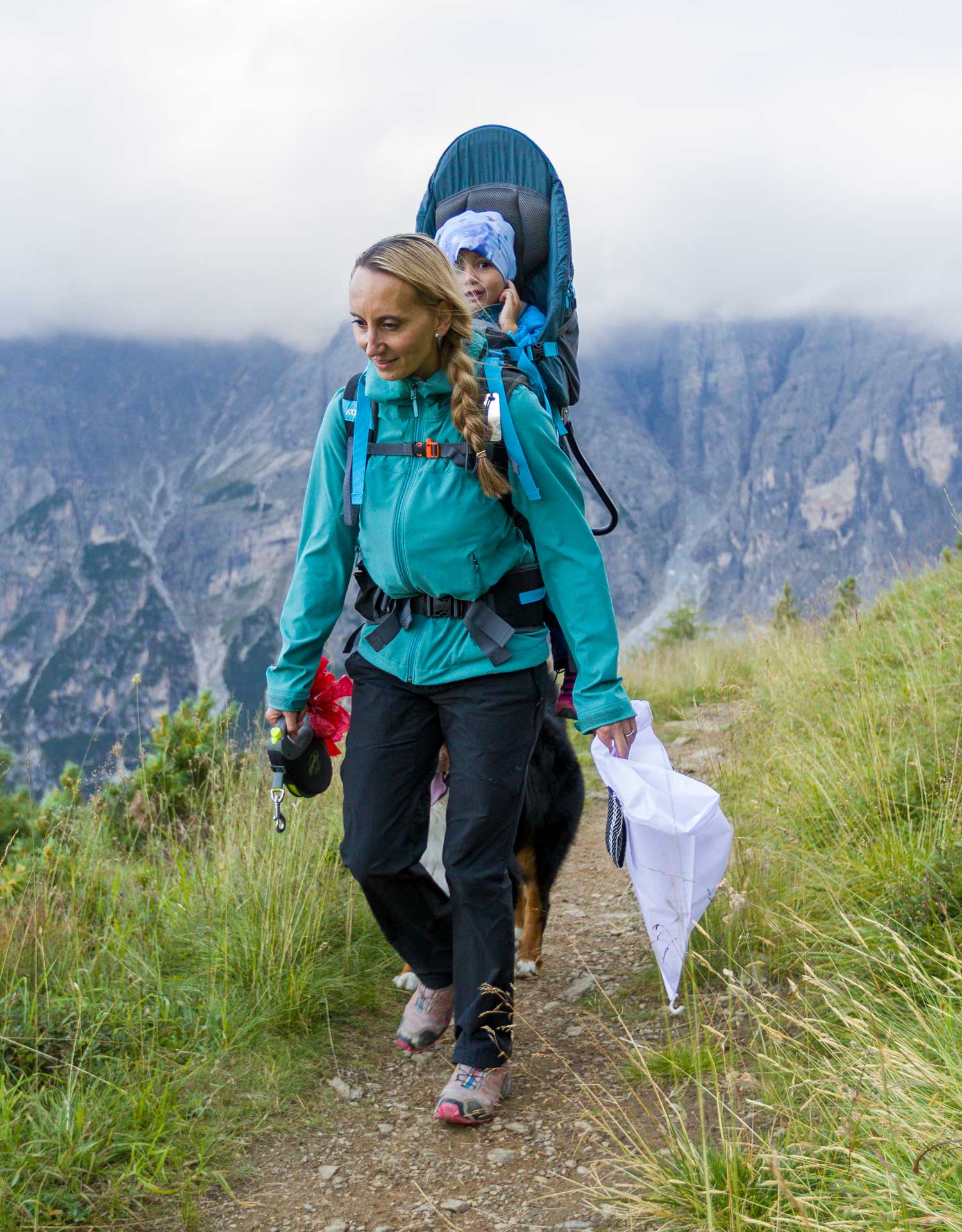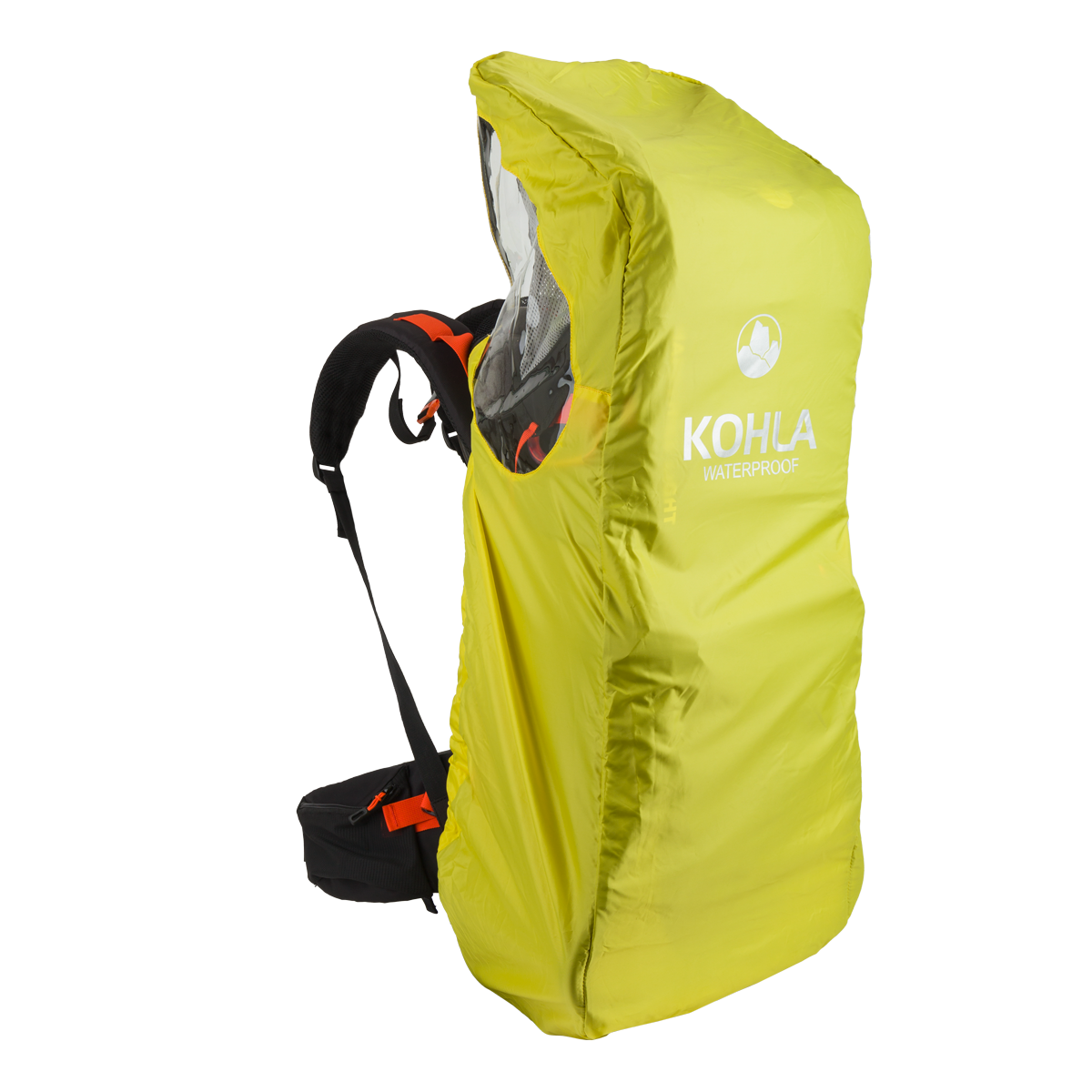
Child carriers: the ultimate solution for active families with young children
At what age is a child carrier suitable?
How long can children be carried in a Kraxe?
Click here for the KOHLA child carriers:


How does the child sit properly in the carrier?
An ergonomic child carrier offers both the child and the adult optimal comfort during transport. You should pay particular attention to the following points when equipping and adjusting the carrier:
Sitting position:
The child should be carried in a tuck-and-spread position to support the natural development of his or her hips. Please be sure to place the legs in a slightly bent position in the foot loops provided. This prevents the child's legs from falling asleep so quickly. On long hikes, be sure to change the position of the legs. n.
The seat height should be adjusted to the back length of the child, i.e. the chin should be able to look over the head cushion (distance between chin and cushion is about five centimeters) and the arms should be able to move freely.
For older children, the seat can be lowered to allow a more upright sitting position. Again, make sure the kids position their feet at a flat angle.
Cockpit:
The entire seating area of the child belongs to the stretcher cockpit. Here, care should be taken that the seating position is individually adjustable and that the little passenger can sit stably and comfortably. The back area, side entrances and chin area should be softly padded and preferably made of breathable materials.
Harness system:
A harness system that can be individually adjusted to the child is a must. At KOHLA, we rely on a five-point system with additional fixation at the chest. All straps are soft and padded with breathable material.
How do I adjust the back carrier correctly to my height?

